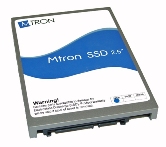|
Solid State Drives (SSD)
High Speed, High Reliability and High Security Storages
- Personal Computing: high end laptops and PCs, such as for designing, gaming, simulations and government business where high reliability is required.
- Enterprise Storage: servers involving high density reading such as web portal and e-commerce online companies, large multi-national companies, telecom operators, and content delivery networks.
- Rugged Computing: computers used in mobile or harsh environment such as on auto vehicles, trains, airplanes, aerospace, oil field, and other outdoor computing scenarios.
1. Hard disk failure and resultant management costs. According to a the study by Carnegie Mellon and Google, an HDD fails at the rate of 8.6% even in a well-controlled environment. This cause not only material costs but also entails labor costs, losses due to downtime as well as customer relations management costs.
2. Redundancy caused by
its low IO performance
3. Power consumption
|
  |
Wireless Semiconductors
Solis State Drives
Solar and Wind Energy
|
|
